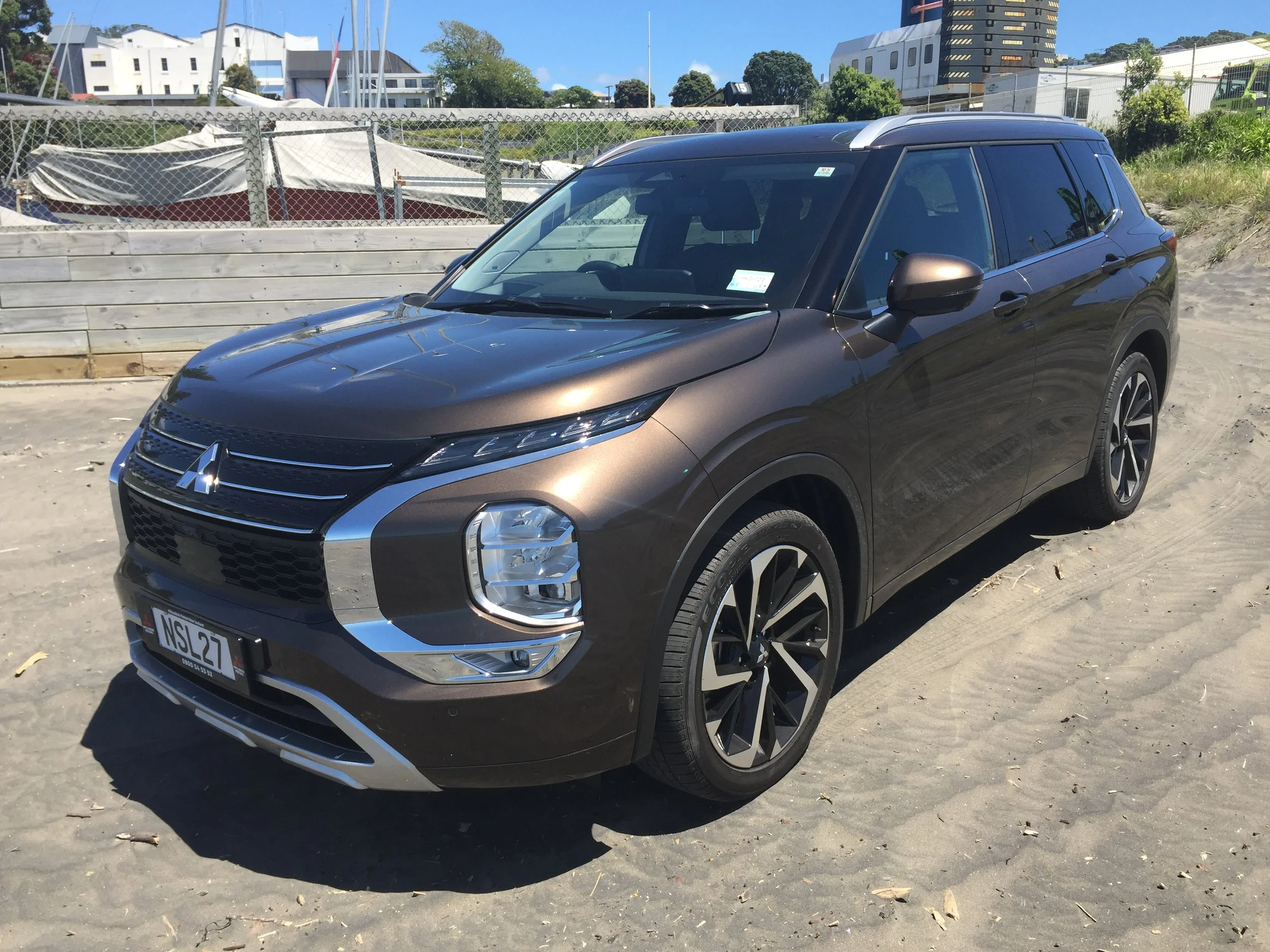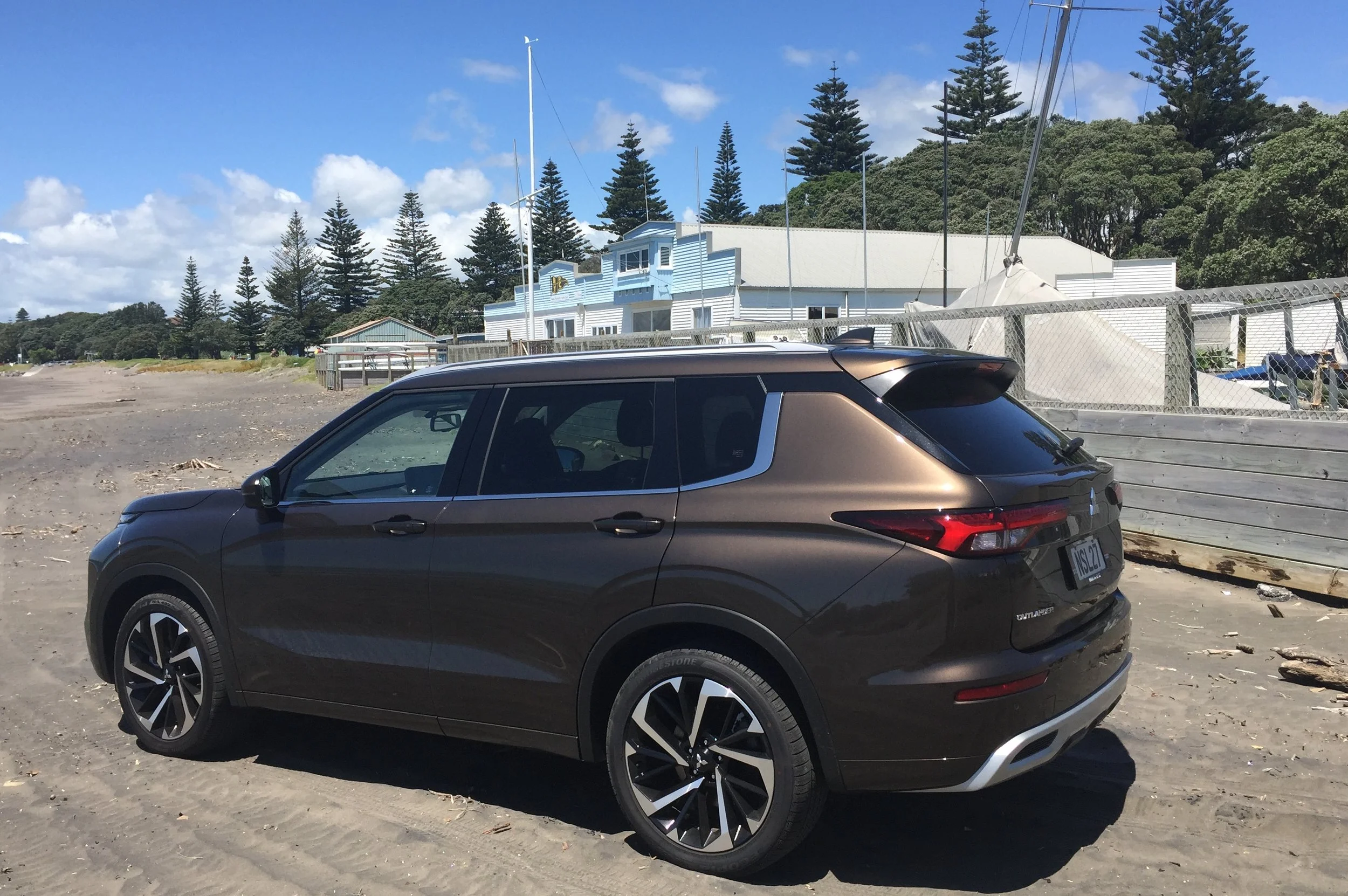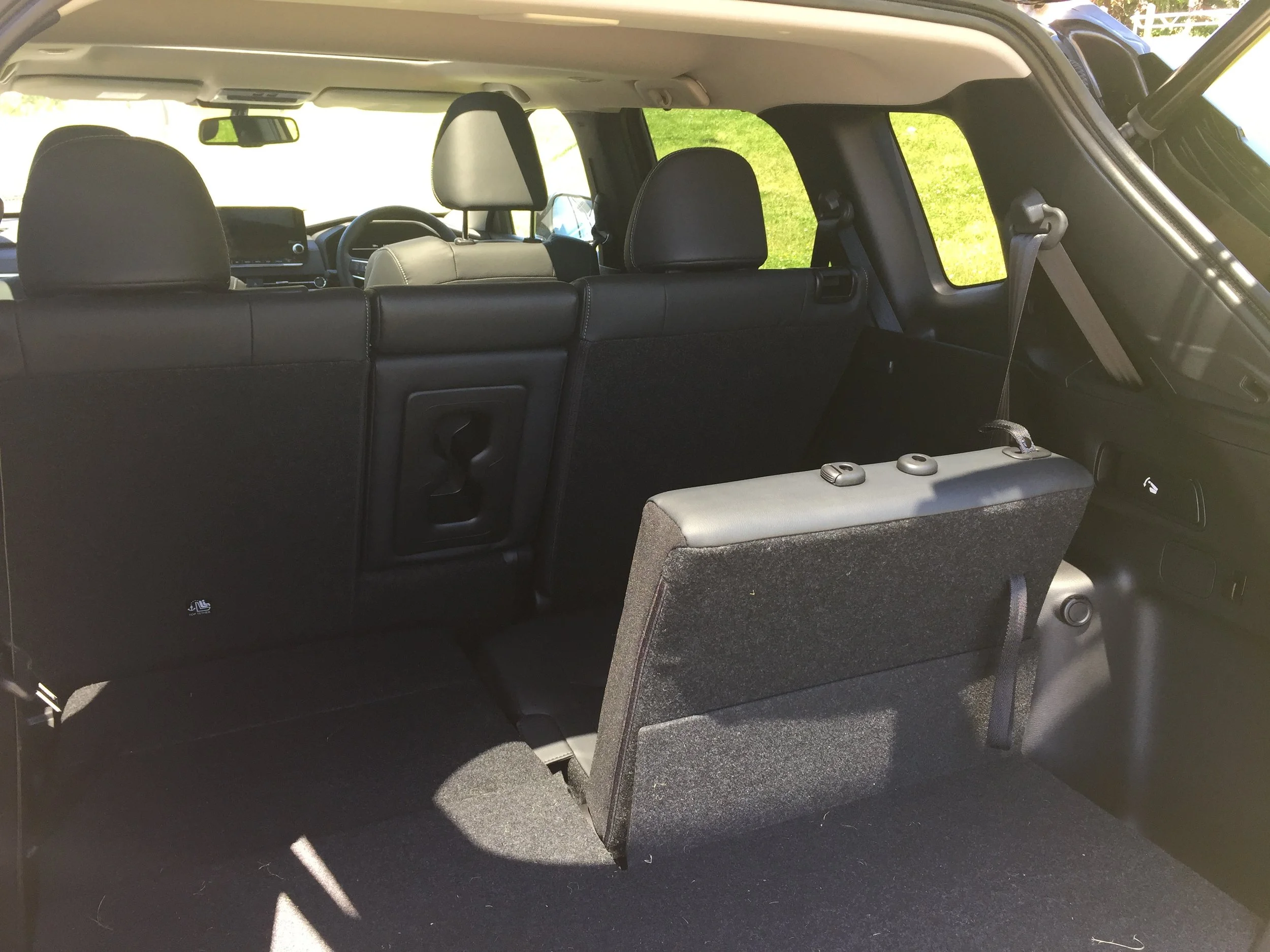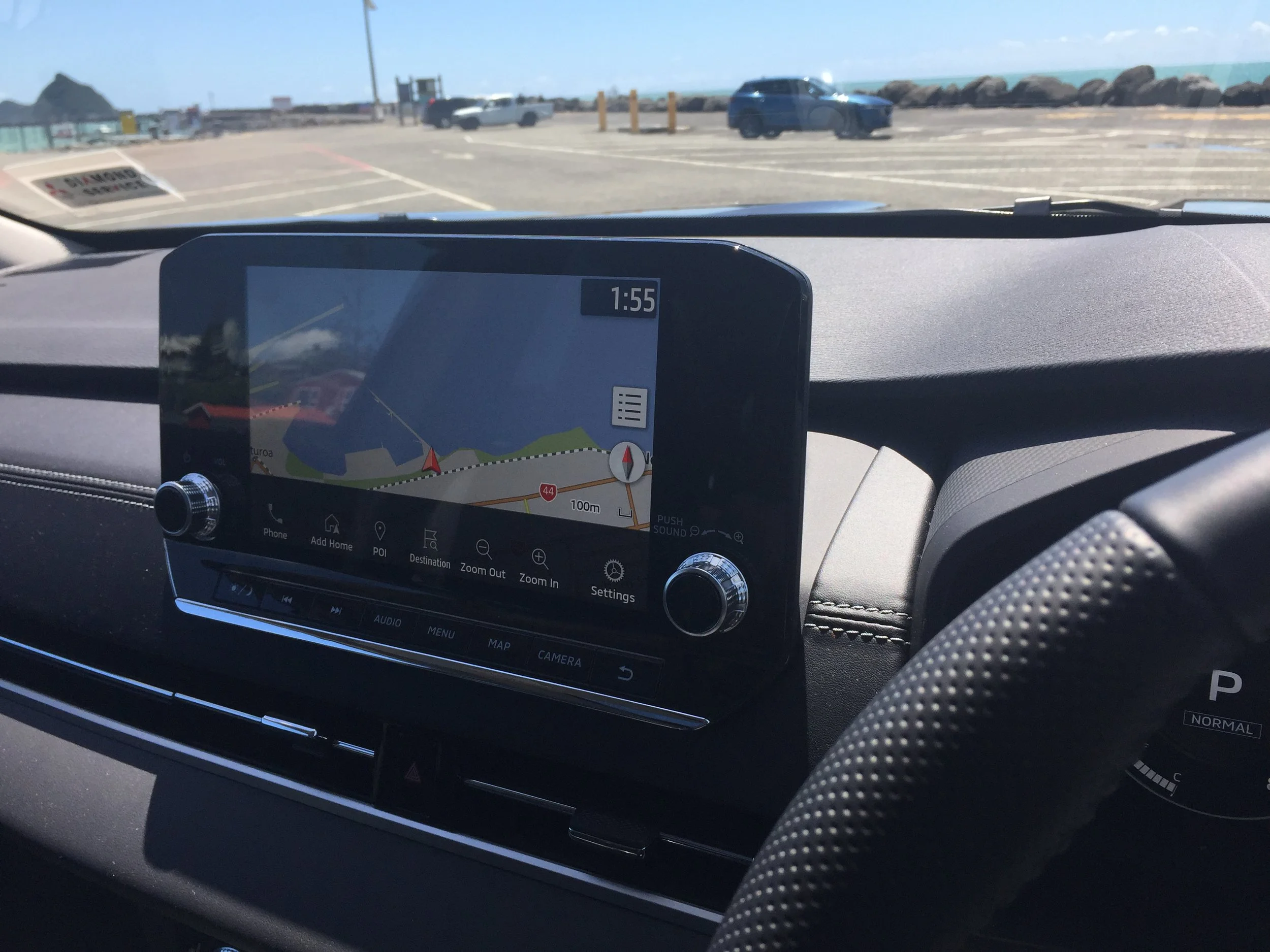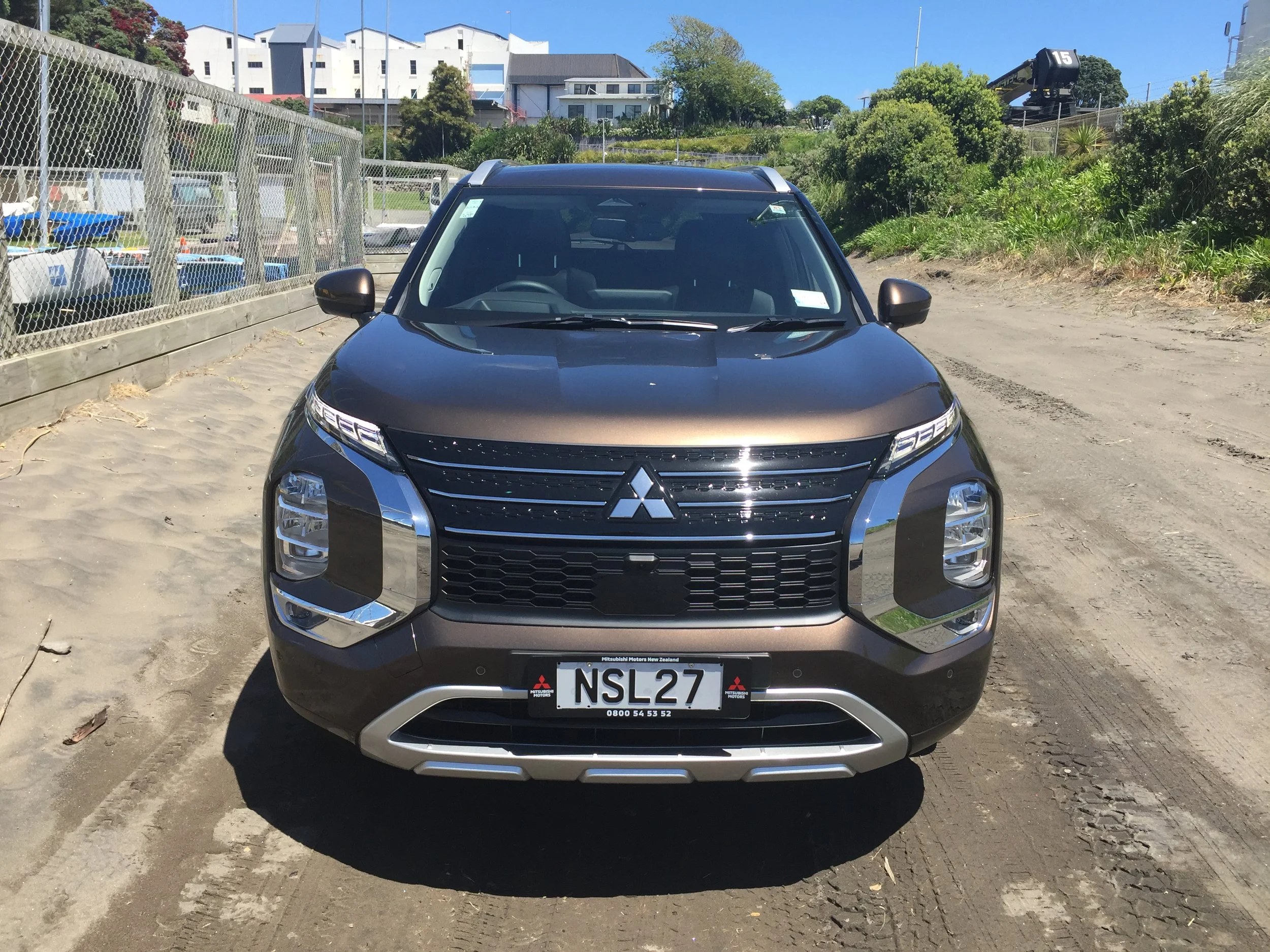Mitsubishi Outlander VRX AWD review: Fresh yet still familiar
/Something more of a Nis-subishi, having moved to a platform and engine from an alliance partner, it nonetheless maintains old virtues.
Price: $54,990.
Powertrain and economy: 2.5-litre four cylinder direct injected petrol engine, 135kW/6000rpm, 245Nm at 3600rpm, eight-step CVT automatic transmission, official economy 8.1 L/100km combined, 185g/km CO2.
Vital statistics: 4710mm long, 1745mm high, 1862mm wide, 2706mm wheelbase; luggage space 163-1473 litres.
Like: Plenty of interior room, high level of specification, particularly safety, powertrain.
Don’t like: Frontal design is aggressive.
MITSUBISHI has a history of making haste slowly; it’s well-known for extracting every bit of value out of a vehicle.
So it goes with the Outlander. This brand-new edition replaces a model around since 2012. The predecessor underwent various facelifts and technology updates and enjoyed stellar sales; 2424 sold last year was good given the coronavirus conditions, but nothing like this year, with 5999 sold by the end of November - 1000 of those sold in that month alone. It seems likely the whole of 2021 performance will be three times that of 2020.
And that’s with the runout model, not the new version, only just arriving. Outlander should have undergone a full model change a couple of years ago, however any such planning changed in 2016, when Nissan acquired a controlling interest in Mitsubishi, resulting in the Renault-Nissan-Mitsubishi Alliance.
This opened the way for the sharing of all sorts of technologies and materials. This fourth-generation Outlander is built on the Common Module Family platform also used by Nissans and Renaults. It is powered by a Nissan 2.5-litre petrol engine with an eight-step continuously variable automatic transmission shared with the next Nissan X-Trail due to arrive next year.
All-wheel drive Outlanders continue with Mitsubishi’s own Super All-Wheel Control (S-AWC) system however, which has been improved and is 15 percent lighter. Plug-in hybrid versions that become available in January have an updated version of the Mitsubishi PHEV technology that was aboard the previous-generation Outlander; so a 2.4-litre engine, but married to a much bigger battery this time.
It’s all rather exciting and an outstanding example of the benefits that can come from strategic partnerships. Even though Nissan now holds a controlling interest in Mitsubishi, it has not ‘acquired’ the brand – Mitsubishi is still very much its own master, regardless of the cross-sharing.
That explains plenty about the look and feel of the latest Outlander. It is essentially more of the same, only bigger, more powerful, safer, and better specified. Consequently it is also more expensive, with the all-wheel drive VRX tested here costing $9000 above than the runout price of its predecessor.
Still, that new price is a couple of thousand dollars less than a VRX was at launch nine years ago. So the value is still very much there – and the pricing is about lineball with major competitors such as Toyota RAV4 and Honda CR-V.
The most noticeable visual feature of the new Outlander is its aggressive frontal design. This latest iteration of Mitsubishi’s so-called ‘dynamic shield’ look features all the lights stacked one above the other – the daytime running lights and indicators sit highest, then there is a very large stack of no fewer than three LED headlights, and the fog lights are further down in the front bumper.
From the operational perspective this headlight design works very well – with the VRX the stack includes four LED low beam and 12 adaptive LED high beam lights, which combine to provide excellent breadth and width of headlight beam.
But the personal jury has to remain out on how it all looks. Mitsubishi itself says the overall design is to help give the Outlander’s face a menacing look. There’s no doubting that. The basic frontal design is similar to that on the ASX, Eclipse Cross and Triton. But I wonder if this time around it is too confronting, and doesn’t quite fit with the more conservative exterior design of the rest of this SUV.
The side window line of new Outlander is now quite high, and this combines with pronounced swage lines that run down the flanks of the new Outlander to give it a solid appearance. And in contrast to what’s happening at the front, the rear is quite conservative in appearance.
Overall, the new Outlander is considerably larger than the third-generation version. It is 15mm longer, a massive 52mm wider, and the wheelbase has been increased by 36mm to a new 2706mm. Ground clearance is up, too.
All this has resulted in a noticeable improvement in interior room, particularly as regards shoulder room. The front and second row seats are also more comfortable via increased adjustability and a big increase in the size of the backs of the second-row seats.
However the third row in this new seven-seater continues to lack room in terms of legroom and – because of the rear wheel arches – shoulder room. So as usual, those seats are there to be used only when really needed, and are more likely to spend most of their life folded down in the interests of more cargo space.
That rear cargo room in the VRX is about the same as the previous model at 478 litres with the third row folded down, but the opening width of the rear has been greatly improved by 150mm to a new 950mm. At the VRX level the tailgate is power remote with hands-free access, able to be operated with a flick of the foot under the rear bumper.
Overall, the new Outlander’s interior is very impressive, in terms of both design and comfort. The dash area has a clean look, and at the VRX level the seats are upholstered in leather with a quilt pattern. The two front seats are powered, with memory that includes an entry/exit function that automatically slides the seats back whenever the shift lever is in Park, to make it easier to get in and out of the vehicle.
The VRX now has triple-zone climate control with independent temperature control for those in the rear, there are pull-up sunshades for the rear passenger windows, and a pair of nice new parking aids are a tilt function on the outside mirrors so the driver can more easily see parking lines, and an around-view monitor with what is known as moving object detection that allows the driver to spot pedestrians and obstacles while parking.
Also aboard the VRX are a panoramic sunroof, 10-speaker Bose premium audio, 9-inch touchscreen, 12.3-inch digital instrument cluster that is customisable, head-up display, wireless smartphone charging, USB ports front and rear, and both Apple CarPlay and Android Auto.
There’s also a swag of driver assist features, several new to Mitsubishi. These include active blind-spot assist which detects other vehicles in surrounding lanes, lane departure prevention, emergency lane assist, traffic sign recognition, rear automatic emergency braking which stops the driver from backing into something, and driver attention alert.
There’s even a rear seat alert which is apparently designed to help prevent owners leaving their children in the Outlander. It warns the driver to check the rear seat when the transmission is sifted into Park, and if there is something left on the rear seat it also beeps the horn eight seconds after the driver door has been closed.
Though the engine is from another, Mitsubishi says it has given its own tune. Outputs are 15kW/25Nm above those from the old 2.4. It certainly feels more torquey at low and medium speeds, but official average fuel consumption has risen to 8.1 L/100km compared to the previous Outlander’s 7.2 L/100km.
This must also surely be due to the new model’s enlarged size and increased amount of kit; the kerb kerb weight of 1730kg means this VRX carries 195kg more than the last. That’s almost the equivalent of two adult males. Mind you, during my week with the VRX I didn’t particularly feel that extra weight, and I managed to get my average fuel consumption down to slightly below 8 L/100km.
The engine is mated to an eight-step CVT automatic that operates via an electronic shift-by-wire system – a first for any internal combustion engined vehicle produced by Mitsubishi. It works well, and in Sport mode there are paddles on the steering wheel for manual operation.
Once again the Outlander VRX has a Drive Mode Selector that offers a total of six modes – tarmac, gravel, snow, mud, normal and eco – that manage the engine, transmission, power steer, all-wheel drive, active yaw control, ABS brakes and stability control. It all works well, and significantly it is easy to operate.
Plenty of Kiwis are used to the Outlander’s all-wheel drive system, and this time around with the VRX the drive is made more secure thanks to a lighter-weight but more rigid suspension system, and 20-inch wheels and tyres. Brakes are also bigger to help cope with the vehicle’s bigger size.
Perhaps that’s the biggest plus about this new Outlander; it’s ease of operation. It really is an easy and secure SUV to use, and that’s probably what comes from not rushing too quickly into full changes of particular model lines.
Mitsubishi has given itself plenty of time to get things right with this vehicle, right down to using the Alliance in choosing everything from platforms to powertrains to safety. I see Outlander continuing as one of our biggest-selling medium SUVs.

